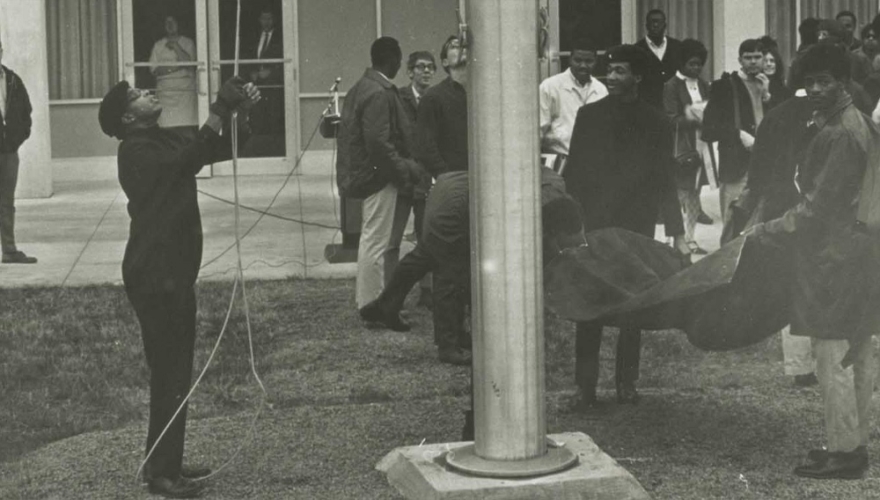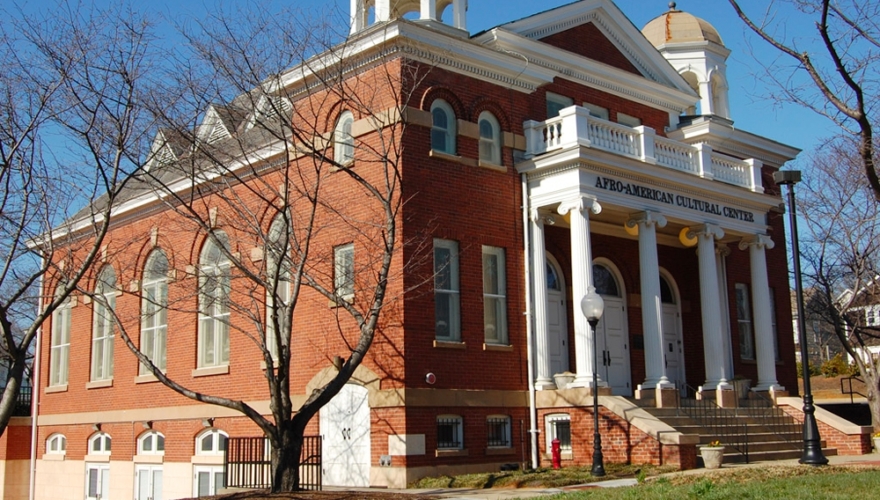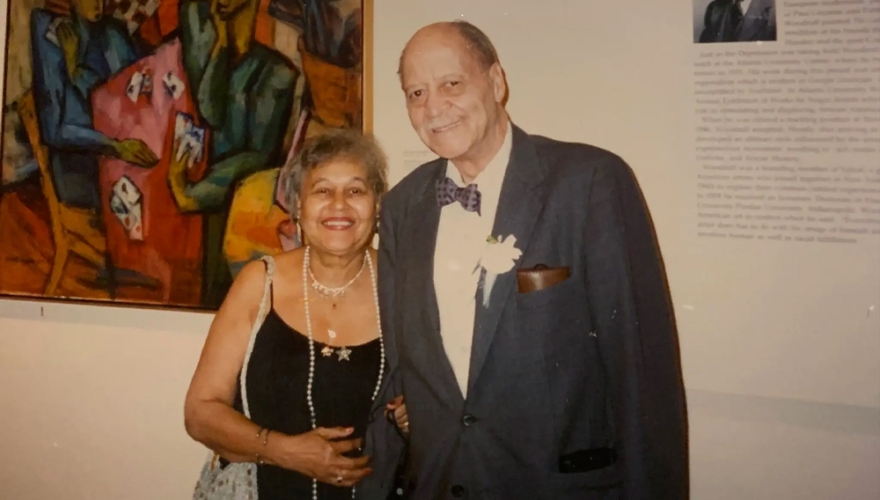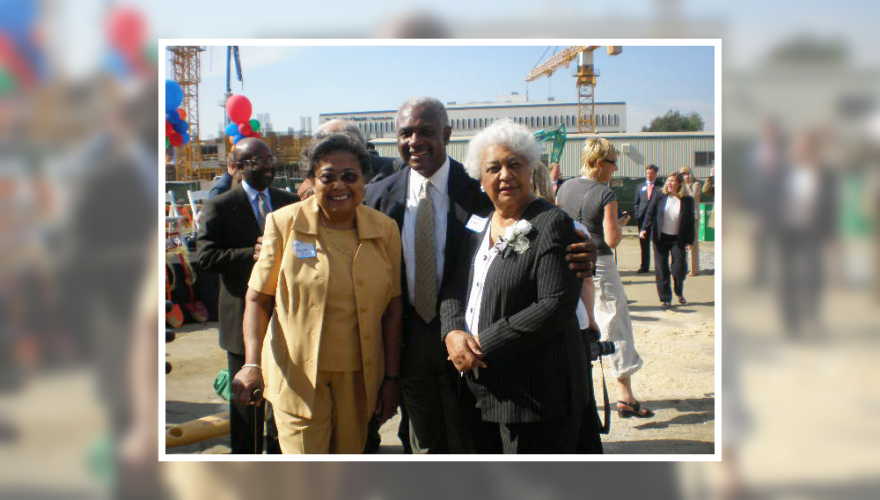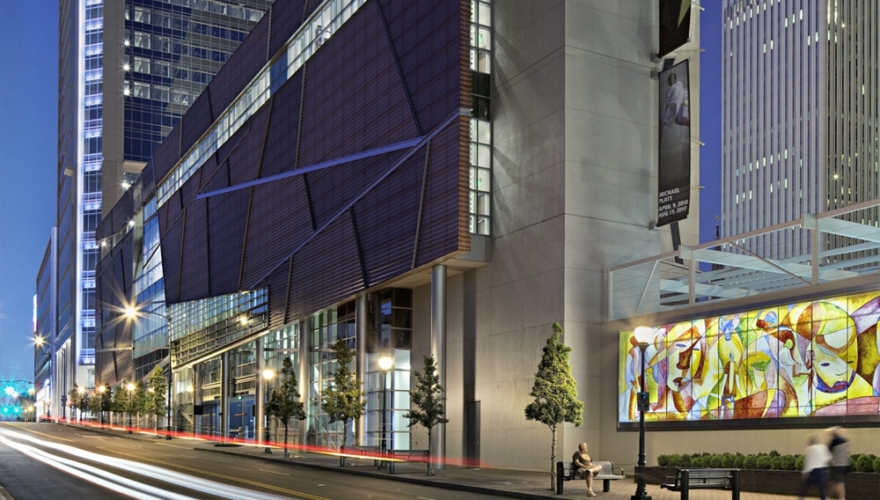Without the vision and unwavering determination of co-founders Dr. Mary T. Harper and Dr. Bertha Maxwell Roddey, the Gantt Center — this prominent, public space established to celebrate the African-American experience — would not exist. Demolished inner-city neighborhoods coupled with campus unrest launched a battle to preserve Charlotte’s African-American history. What some deemed only a possibility 50 years ago has grown, step-by-step, to become the region’s destination for African-American art, history and culture.
Below are some of the many milestones in the Center's storied past.
History Made At Clemson University
In January of 1963, Charleston-born Harvey Bernard Gantt became the first African-American to be admitted to Clemson University in Clemson, SC. In September of the same year, his wife, the former Lucinda Brawley would become Clemson's first African-American woman to enroll.
Vigil At The Flagpole
On February 7, a small group of Black students at the University of North Carolina Charlotte (UNCC) hold a vigil at the flagpole at the center of campus to commemorate the deaths of three Black college students killed near South Carolina State College in Orangeburg, the prior year. The 1968 Orangeburg massacre, which pre-dates the Kent State and Jackson State incidents, was the first unrest on a U.S. university campus resulting in the deaths of protesters.
Ripples from that February 1969 event would culminate in the formation of the UNCC Black Studies Center in 1973.
Vistas Unlimited: The Charlotte-Mecklenburg Afro-American Cultural and Service Center
Mary Harper, a young assistant professor of English at UNCC, is in pursuit of a doctoral degree. One of her courses requires the development of a project demonstrating excellence in which some societal change could be achieved. With guidance from a mentor, Dr. Bertha Maxwell Roddey, director of the UNCC Black Studies Center, Harper develops a project proposal titled "Vistas Unlimited: The Charlotte-Mecklenburg Afro-American Cultural and Service Center."
Work on the doctoral project reveals a lack of recognition and awareness of important societal contributions made by African Americans. Their academic research also points to a need to preserve history and landmarks of significance to African Americans in Charlotte, particularly during an era when urban renewal projects were demolishing Black neighborhoods. Together, Harper and Roddey envision a place where African Americans can learn about their heritage and celebrate the contributions of unsung Black originators of art, history, and culture.
With support from UNCC President Bonnie E. Cone, Harper, and Roddey deepen their endeavor to create a pathbreaking cultural center. They collaborate with Fred Alexander, an influential political leader, along with other powerful Charlotteans including Harry Golden, a prominent writer; Dr. William S. Mathis, UNCC Dean of Humanities; Dr. William M. Britt, UNCC Vice Chancellor of Academic Affairs; and Mamie L. Brewington, a well-known community leader.
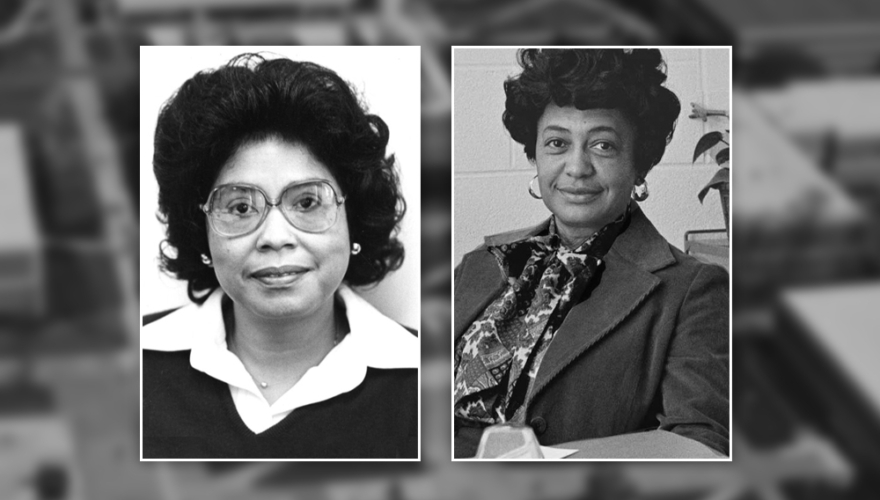
Where The Public Can Access African American Culture
An outdoor festival in Marshall Park on August 31 marks the founding date of The Afro-American Cultural and Service Center. Dr. Mary Harper and Dr. Bertha Maxwell Roddey are celebrated as the Center's "founding mothers."
With Mamie L. Brewington as the first board chair, the Center becomes a place where the public can access African-American culture through exhibitions, performing arts, and educational programs.
Harvey B. Gantt enters local politics when he is appointed to fill a vacant seat on the Charlotte City Council.
Spirit Square Called Home
The Center, now formally known as the Afro-American Cultural Center, and affectionately called the "Afro-Am" or "Afro Center" establishes its home at Spirit Square Center for the Arts, located at 345 North College Street in First Ward. Once a church, Spirit Square opens in 1976 as a community arts center and AACC becomes one of its resident organizations.
Harvey Gantt Becomes Mayor
From 1974 until 1983, Gantt served on the Charlotte City Council. He was elected to two terms as the first African-American mayor in Charlotte's history, serving in that capacity from 1983 to 1987.
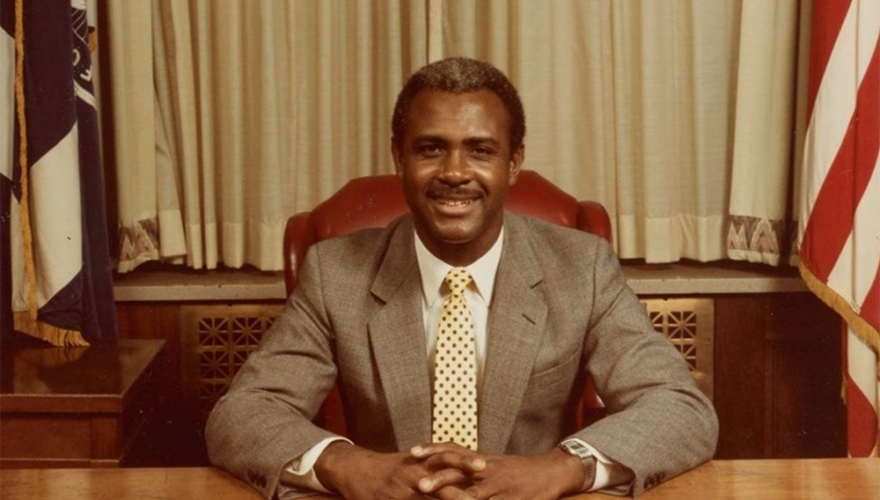
The Center Relocates
The Center relocates to the former Little Rock A.M.E. Zion Church site, located at North Myers and Seventh Streets in the First Ward neighborhood.
Established in 1884 by formerly enslaved Black Charlotteans, the church congregation and building carry great historical significance. The Little Rock A.M.E. Zion Church frame structure was moved across Seventh Street in 1908 and was completed in 1911.
Video: Harvey Gantt recalls the dilemma faced by Charlotte City Council when balancing growth and preservation, and "a curve in the road".
The Hewitt Collection Pledged
Bank of America purchases the Hewitt Collection — 58 two-dimensional works by African-American artists — from John and Vivian Hewitt and pledges the renowned collection to the Afro-American Cultural Center.
A transformative gift to the Center, the John & Vivian Hewitt Collection of African-American Art reflects a labor of love created by two avid collectors over a 50-year period. Assembled works range in style from representational to pure abstraction. Romare Bearden, Elizabeth Catlett, and Henry O. Tanner are among the 20 artists featured.
A Brand New Facility In The Works
On September 27, ground is broken on a $158 million cultural campus along South Tryon Street. A new home for the Center, where it will house the Hewitt Collection, is a part of the project. Selected to design the facility, The Freelon Group architecture firm designs a 45,000 square-foot, four-story facility featuring galleries, space for performances and learning, administrative offices, a museum store, and rooftop terrace at an estimated $18.6 million.
The city block at South Tryon and Stonewall streets, where the Center is under construction was once part of a thriving African American neighborhood spanning Second Ward, called Brooklyn. Architectural design elements within the building evoke historical references to the neighborhood, which was razed during urban renewal projects of the 1970s. The Center's staircases and escalators pay tribute to a Brooklyn landmark, Myers Street School (affectionately referred to as the "Jacob's Ladder" school by students), which featured a prominent exterior staircase. Other links to the Center's historical context are "stitched" steel panels on the exterior façade, inspired by African textile designs and African American quilting patterns.
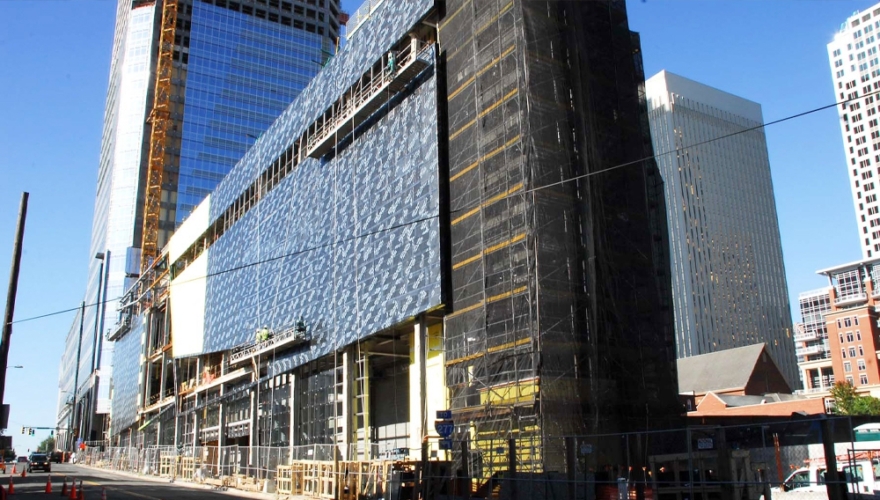
A New, State-Of-The-Art, Uptown Cultural Facilty Debuts
A state-of-the-art, Uptown facility, now re-named the Harvey B. Gantt Center for African-American Arts+Culture, opens to the public on October 24 with the building's dedication.
The Center's new home debuts to fanfare, including an exhibition of the Hewitt Collection, a black-tie gala, and weekend-long festivities.
Gantt Symposium
During this decade, the Gantt launches Gantt Symposium, an annual lecture series designed to engage citizens in conversations about topics relevant to the community at large, helping move the city towards the goal of building a better Charlotte. Speakers include Dr. Henry Louis Gates, Common, Dr. Cornell West, Iyanla Vanzant, Anna Deavere Smith, and Hill Harper.
40 Years: Remember
Emerging from the civil rights struggle of the 1960s and 1970s, the Gantt Center stands as a legacy of perseverance, boldness, and courage from that movement and prior eras. Four decades of exhibitions, presentations, and performances have served to bridge continents, generations, cultures, and understanding.
As 40 years is celebrated, the Center's mission endures to "present, preserve, and celebrate excellence in the arts, history, and culture of African Americans and those of African descent".

Grand Lobby Renamed In Honor of Founders
The Center renames its second-floor lobby to the Harper-Roddey Grand Lobby in honor of the founding mothers. Charlotte City Council Member Justin Harlow presents a proclamation declaring August 22, 2018, "Harper-Roddey Day". Charlotte Mayor Vi Lyles gives closing remarks.
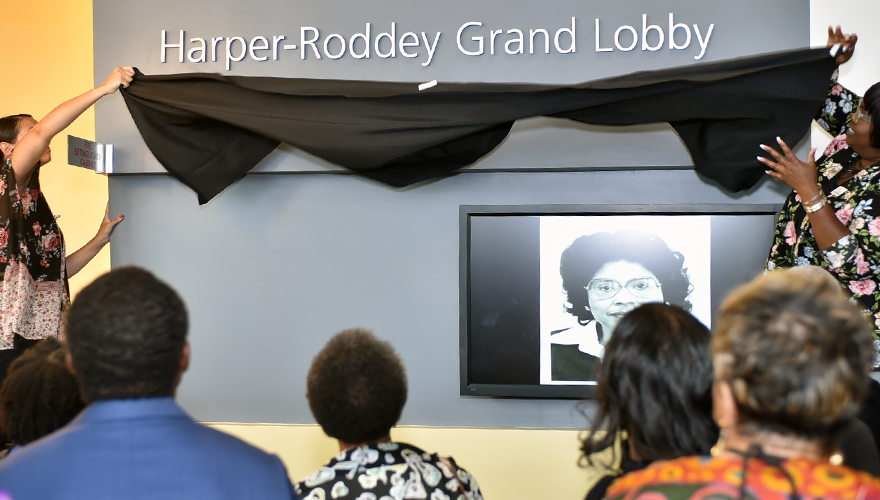
Unmasked Digital Series Launched
The Gantt launches Unmasked, a virtual conversation series designed to highlight issues in the Black community exacerbated by the pandemic. The series brings together community voices to discuss topics ranging from gentrification and economic mobility to healthcare inequities and the impact of COVID-19. Participants include Glenn Burkins, Ricky Woods, Dena Diorio, U.S. Rep. Alma Adams, Garry McFadden, Malcolm Graham, Gibbie Harris, and Bakari Sellers. Engagement reaches well over 20,000 viewers combined. This springboards focus on digital engagement and transformation.

Stonewall Street Renamed to Honor Former Black Community
The City of Charlotte renames Stonewall Street to Brooklyn Village Avenue. The Gantt sits on the corner of South Tryon Streets and East Brooklyn Village Avenue.
Previously named for confederate war general Thomas Johnson “Stonewall” Jackson, the new name honors the legacy of Brooklyn, a historic Black neighborhood in Charlotte’s Second Ward.
MODA Digital Arts Studio Opens
The Center transforms its traditional arts classroom space into a digital arts studio. MODA (Mecca of Digital Arts) is created to facilitate digital art through cutting-edge equipment, software, instruction, and mentorship. MODA debuts to the public in March.

Leadership Changes
After serving as President & CEO for 14 years, David R. Taylor announces his retirement from the Gantt. Bonita Buford, Chief Operating Officer, is named President & CEO and takes the helm as the Center celebrates its 50th anniversary.
The Gantt Golden Year
For 50 years, the Gantt has used its voice to present, preserve, and celebrate African-American culture. We tell stories from the Black experience, shifting perspectives, shaping society, and inspiring generations. As we mark this major milestone, there is much to reflect on, laud, elevate, and consider for the next 50 years!



